Type of resources
Topics
Keywords
Contact for the resource
Provided by
Years
Formats
Representation types
Update frequencies
Scale
-

This poster on the UKCCSRC Call 2 project, The Development and Demonstration of Best Practice Guidelines for the Safe Start-up Injection of CO2 into Depleted Gas Fields, was presented at the Cranfield Biannual, 21.04.15. Grant number: UKCCSRC-C2-183.
-
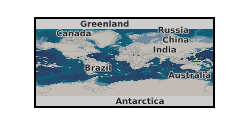
The CO2 storage operation at Sleipner in the Norwegian North Sea provides an excellent demonstration of the application of time-lapse surface seismic methods to CO2 plume monitoring under favorable conditions. Injection commenced at Sleipner in 1996 with CO2 separated from natural gas being injected into the Utsira Sand, a major saline aquifer of late Cenozoic age. CO2 injection is via a near-horizontal well at a depth of about 1012 m below sea level (bsl) some 200 m below the reservoir top, at a rate approaching 1 million tonnes (Mt) per year, with more than 11 Mt currently stored. The report can be downloaded at http://nora.nerc.ac.uk/9418/.
-
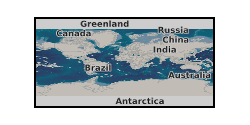
This report presents a set of pragmatic and workable generic procedures, suggested best practices and other recommendations and observations for the safe and sustainable closure of geological CO2 storage sites. These have been distilled from the results of the CO2CARE project and represent the most important messages that will be of benefit to Regulators, storage site Operators and other stakeholders. The report can be downloaded from http://nora.nerc.ac.uk/512805/
-
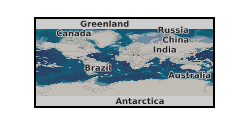
In this study, two strategies, thermal pretreatment and chemical doping, were investigated as a method of improving the residual carrying capacity of Longcliffe and Havelock limestone for calcium looping systems. Four parameters were varied during thermal pretreatment: temperature (900-1100 degrees C), time (3-12 hr), gas composition (0-100 % CO2 balanced in N2) and particle size (90-355 micrometre). After pre-calcination, the sorbents were subjected to 20 carbonation-calcination cycles performed in a thermographic analyser (TGA) to monitor any signs of sorbent improvement. The degradation of sorbent activity was modelled using the decay equation suggested by Grasa and Abanades (2006). Both Longcliffe and Havelock samples showed self-reactivation when pretreated under CO2, however this did not result in a greater carrying capacity after 20 carbonation/calcination cycles compared to the untreated limestone. For chemical doping, Longcliffe doped using 0.167 mol % HBr via quantitative wet impregnation method resulted in an increase in residual carrying capacity of 27.4 % after thermal pre-treatment under CO2 when compared to the untreated but doped limestone, assuming self-reactivation continued as modelled. When Longcliffe was doped and then pretreated under pure N2, the limestone showed self-reactivation, which was not seen in the undoped sorbent when also pretreated under N2. Thus, the success of pretreatment may be dependent on the chemical composition of the limestone. Finally, BET surface area and BJH pore volume analysis was used to understand the changes in the sorbents' morphologies. The closure of the mesopores (dpore<150 nm) after the pretreatment was correlated to the self-reactivation in the subsequent cycles.
-
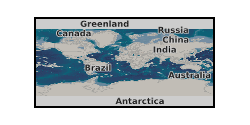
This data contains the output from the first Flexible CCS Network Development (FleCCSnet) workshop of stakeholders discussing the development of CO2 networks in the UK. The first was held on the 30 April 2014 at the University of Edinburgh, UK. The purpose of Workshop 1 was to identify and confirm the key questions to be considered in order to understand the most likely impacts of variability in the CO2 sources and variability in CO2 sinks on CO2 transport system design and operation. There were a total of 21 attendees including 7 representatives from PSE, Scottish Power, BP, SCCS, Parsons Brinckerhoff, Element Energy, and AMEC. The dataset consists of two reports. The first report, 'Developing CO2 networks: Key lessons learnt from the first Flexible CCS Network Development (FleCCSnet) project workshop', summarises the workshop findings, which have been used to create a series of scenarios that were investigated by transient simulation. The scenarios developed are described in the second report, 'Developing CO2 networks: Scenarios building on the first Flexible CCS Network Development (FleCCSnet) project workshop'.
-
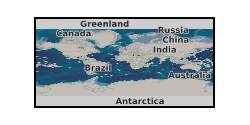
This document is part of the second phase of the Saline Aquifer CO2 Storage (SACS2) project. It describes the results of Task 5.6 of Work Area 5 (Geophysics): Feasibility of multicomponent data acquisition. The aim of this Task is to evaluate the feasibility of multicomponent seismic data for monitoring the development and movement of the CO2 bubble during CO2 injection into the Utsira Sand at the Sleipner Field, North Sea. The report can be downloaded from http://nora.nerc.ac.uk/10270/.
-
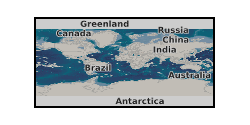
This report describes the results of Task 5.1 in SACS2 Work Area 5 (Geophysics). The aim of the Task is to evaluate the applicability of microgravity surveys as a means of monitoring the future subsurface distribution and migration of the Sleipner CO2 bubble. The report can be downloaded from http://nora.nerc.ac.uk/511457/.
-
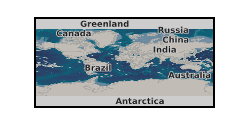
Saline Aquifer CO2 Storage Phase 2(SACS2). Work Area 1 (Geology) - Progress Report 1 April to 31 December 2000. The report can be downloaded from http://nora.nerc.ac.uk/511460/.
-
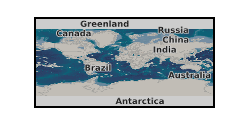
Revised full proposal cover sheet for scientific drilling (852-CPP2) 'GlaciStore: Understanding Pleistocene glaciation and basin processes and their impact on fluid migration pathways (North Sea)', submitted to Integrated Ocean Discovery Programme (IODP) April 2016. The full proposal cover sheet document is publicly available from IODP; the submitted full proposal document is restricted to the proponents for publication and for review and response from IODP. The proposal is a revision of full proposal 852-CPP in response to review by IODP. The lead submitter, on behalf to the GlaciStore consortium is Heather Stewart, British Geological Survey (BGS).The 32 proponents are from research and industry organisations in the UK, Norway, USA and Canada (BGS, Institute for Energy Technology, Lundin Norway AS, Memorial University of Newfoundland, SINTEF Energy Research, Statoil ASA, University of Bergen, University of Edinburgh, University of Oslo and University of Ottawa University of Texas at Austin). The revised full proposal cover sheet states the names of proponents of the 'GlaciStore' consortium and details for the lead submitter of the bid. The full proposal cover sheet comprises: an abstract of the submitted full proposal including description of project funding support as a Complementary Project Proposal: describes and states the scientific research objectives; summarises proposed non-standard measurements; tabulates details of the 13 proposed drill sites (revised from full proposal CPP-852) to address the scientific objectives. The objectives are to investigate: glacial history and sedimentary architecture; fluid flow and microbial processes in shallow sediments; and the stress history and geomechanical models for strata that have experienced multiple glacial and interglacial cycles. The table of revised proposed drilling sites includes designation of primary or alternate sites, the co-ordinates of the position and water depth at each proposed site, the objective for drilling and sampling and the depth to achieve the objective. The proponents, their affiliation, expertise and role for the submission are listed. UKCCSRC Grant UKCCSRC-C1-30.
-
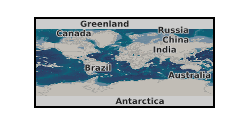
Pre-proposal cover sheet for scientific drilling 'GlaciStore: Understanding Late Cenozoic glaciation and basin processes for the development of secure large-scale offshore CO2 storage (North Sea)', submitted to Integrated Ocean Discovery Programme (IODP) March 2014. The pre-proposal cover sheet document is publicly available from IODP; the submitted pre-proposal document is restricted to the proponents for publication and to progress to full proposal to IODP. The lead submitter, on behalf to the GlaciStore consortium is Heather Stewart, British Geological Survey (BGS).The 25 proponents are from research and industry organisations in the UK and Norway (BGS, Institute for Energy Technology, Lundin Norway AS, SINTEF Energy Research, Statoil ASA, University of Bergen, University of Edinburgh and University of Oslo). The pre-proposal cover sheet states the names of proponents of the 'GlaciStore' consortium and contact details for the lead submitter of the bid. The pre-proposal cover sheet comprises an abstract of the submitted pre-proposal, describes and states the scientific research objectives, and tabulates details of the 12 proposed drill sites to address the scientific objectives. The objectives are to investigate the glacial history and sedimentary architecture, fluid flow and processes, and the stress history and geomechanical response in strata that have experienced multiple glacial and interglacial cycles. The table of proposed drilling sites includes the co-ordinates of the position and water depth at each proposed site, the objective for drilling and sampling and the depth to achieve the objective. The IODP pre-proposal cover sheet is a pdf format file. UKCCSRC Grant UKCCSRC-C1-30
 BGS Data Catalogue
BGS Data Catalogue